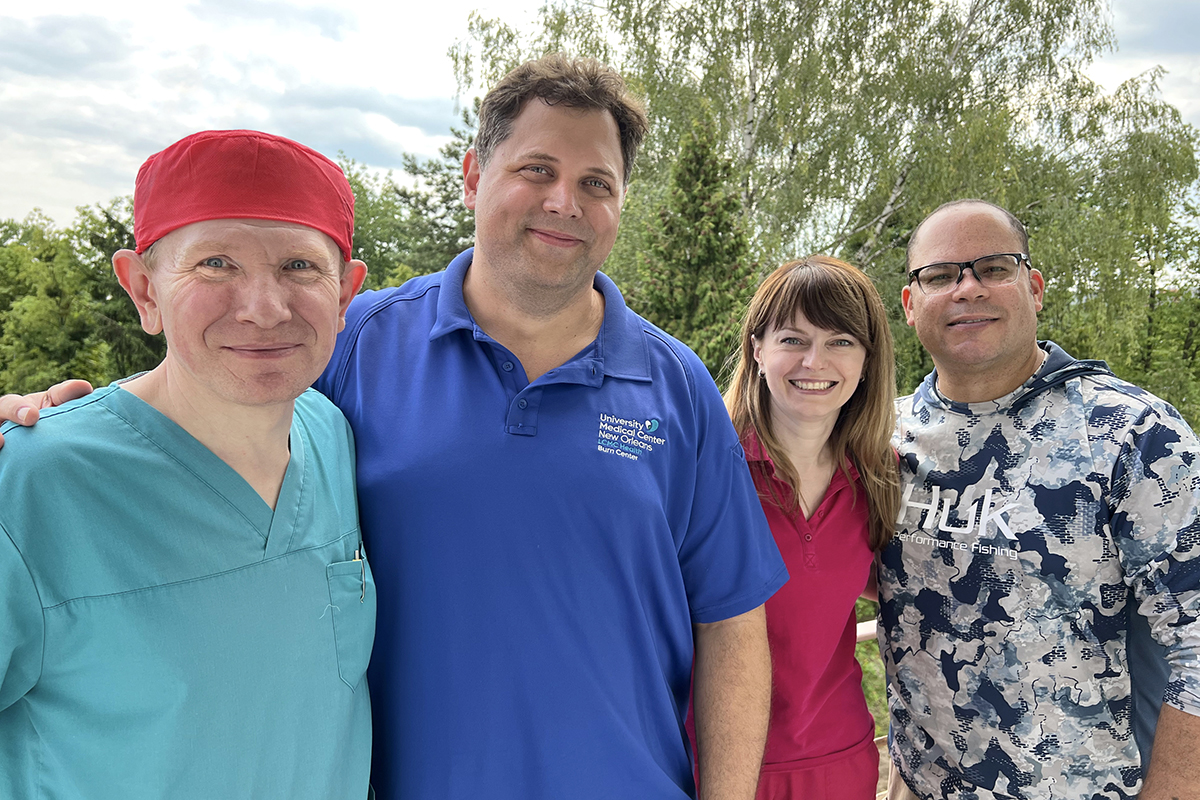LSU Health New Orleans Leads Education to Treat Burn and Blast Injuries
November 09, 2022
Healing the Wounded
Burn surgeons at LSU Health New Orleans are helping first responders in military war zones and civilian life learn how to treat burn and blast injuries. With $4.6 million in support from the U.S. Army Medical Research and Development Command, new tools and training will make the difference between a victim needing a skin graft instead of an amputation, according to Dr. Jeffrey Carter, LSU professor of surgery and director of the Burn Center at University Medical Center in New Orleans. He just witnessed this himself, as he traveled with colleagues to Ukraine this summer to help treat soldiers and civilians injured by fire and explosions, including from Russian mines.
“When you don’t have air superiority in warfare, like the U.S. has had in the Middle East, your ability to medivac people to care is significantly diminished,” Dr. Carter said. “In Ukraine, injured people are primarily transported by train and ambulance. This means definitive treatment is delayed and outcomes are severely compromised. So, anything that can be done in the field, before patients reach the hospital, can make an enormous difference.”
Dr. Carter and his New Orleans colleagues taught the first burn life-support class in Ukraine to medical professionals in Lviv, and are planning to go back to do it again next spring. In parallel, his team is now developing AI-supported burn care training, including a tabletop simulator with fake skin to practice cleaning, clearing, depressurizing and dressing wounds using minimal resources.

Dr. Jeffrey Carter, LSU professor of surgery and director of the Burn Center at University Medical Center in New Orleans, is second from left, with colleagues in Ukraine.
– Photo courtesy of Dr. Jeffrey Carter
“The challenge we face now in the military is the need for prolonged field care. This makes the curriculum and simulations Dr. Carter at LSU is developing a lot more important. With peer or near-peer adversaries like Russia or China, we will not enjoy air superiority, so medical evacuation off the battlefield is likely to be delayed. Military medics will have to do a lot more... Dr. Carter’s work also intersects with efforts to address mass-casualty-disaster planning in the civilian sector. In both settings, better training on prehospital burn care could be limb- and life-saving.”
Dr. Lee Cancio, Director of the U.S. Army Burn Center at the U.S. Army Institute of Surgical Research and retired U.S. Army Colonel


